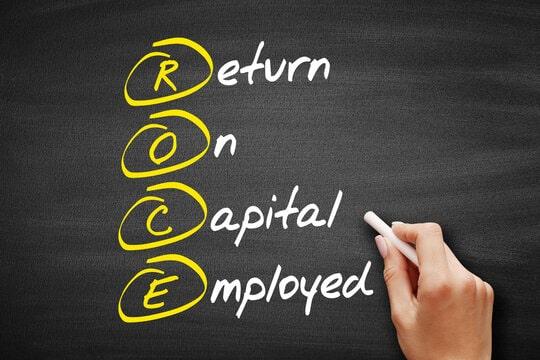ROE vs ROCE | Key Metrics Every Investor Must Know
If you’ve ever looked at a company’s financials and wondered, “Is this business actually using its money well?” . Then, ROE and ROCE are two numbers you should definitely pay attention to. While both ROE and ROCE measure profitability, they look at it from different angles. Understanding the difference between these two can be the key to spotting strong, sustainable businesses and avoiding misleading numbers. In this article delight, we’ll break down the concept of ROE vs ROCE. We will get to know what does ROE and ROCE really mean, when to use each one, and how to apply them with easy examples.
What is ROE (Return on Equity)?
ROE tells you how much profit a company is generating from its shareholders’ money.
- ROE = Net Income / Shareholders’ Equity
It answers the question: “For every ₹100 of shareholder money, how much profit is the company making?” .If a company makes ₹10 lakh in net profit and has ₹50 lakh in equity.
ROE = (10 / 50) × 100 = 20%
This means the company earns 20% return on shareholder investment.
What is ROCE (Return on Capital Employed)?
ROCE tells you how well a company is using all the capital at its disposal—both equity and debt.
- ROCE = (EBIT / Capital Employed) × 100
“For every ₹100 invested in the business (whether from shareholders or lenders), how much profit is generated before interest and taxes?”
If a company has ₹15 lakh in EBIT and ₹100 lakh in capital employed:
ROCE = (15 / 100) × 100 = 15%
🆚 ROE vs ROCE: What’s the Difference?
| Aspect | ROE | ROCE |
|---|---|---|
| Full Form | Return on Equity | Return on Capital Employed |
| Measures return on | Shareholder’s Equity | Equity + Debt (Total Capital) |
| Profit Used | Net Profit (after interest and tax) | EBIT (before interest and tax) |
| Focus | Shareholder returns | Overall efficiency of capital usage |
| Best For | Equity investors | Overall business evaluation |
Why Does ROE Use Net Profit and ROCE Use EBIT?
This often confuses beginners, but there’s a logical reason.
- ROE uses Net Profit because it looks only at shareholder money, and shareholders get what’s left after paying interest and tax.
- ROCE uses EBIT because it includes both shareholder and borrowed money, so it makes sense to look at profits before interest (which goes to lenders) and before taxes (which are not operational costs).
EBIT means the profit a company makes from its operations before paying interest on debt and income tax.
- EBIT=Net Profit+Interest Expense+Tax Expense
Practical Example of ROE vs ROCE: Company A vs Company B
Let’s say two companies, A and B, both make ₹10 lakh profit.
| Detail | Company A | Company B |
|---|---|---|
| Net Profit | ₹10 lakh | ₹10 lakh |
| Equity | ₹50 lakh | ₹50 lakh |
| Debt | ₹0 | ₹50 lakh |
| EBIT | ₹10 lakh | ₹15 lakh (more due to debt leverage) |
| Capital Employed | ₹50 lakh | ₹100 lakh |
ROE:
- Company A: ₹10L / ₹50L = 20%
- Company B: ₹10L / ₹50L = 20%
So, ROE is same. Looks like both are equally good.
ROCE:
- Company A: ₹10L / ₹50L = 20%
- Company B: ₹15L / ₹100L = 15%
Now we see Company A is more efficient in using total capital, despite the same ROE.
When to Use ROE and When to Use ROCE
| Situation | Use ROE or ROCE? |
|---|---|
| You’re an equity investor | ROE – tells you your personal return |
| You want to compare overall efficiency | ROCE – includes all capital sources |
| Comparing companies with different debt levels | ROCE – gives a fairer picture |
Final Takeaway | ROE vs ROCE Demystified
ROE and ROCE are two of the most important tools investors use to understand a company’s financial health and efficiency. While these metrics give you a great snapshot of how well a business is performing, it’s important to remember that no single number tells the whole story. Make sure to check other financial ratios and sections of the company’s report to get a complete picture. But if you’re starting out or want quick insights, ROE and ROCE are definitely the key metrics you should know and watch closely.
Happy investing!
Further insights, read “The Little Book That Still Beats the Market” by Joel Greenblatt https://amzn.to/3Zja0c4
Read also : Stock Splits & Their Effects | Learn Fundamental Analysis https://thebrightdelights.com/stock-splits-their-effects-learn-fundamental-analysis/
